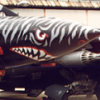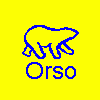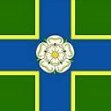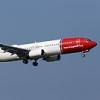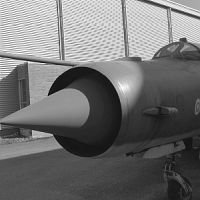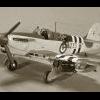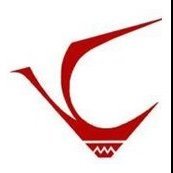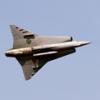Search the Community
Showing results for tags 'Viggen'.
-

1/48 - Saab AJ-37 Viggen by Special Hobby (SH) - released
Homebee posted a topic in The Rumourmonger
This Mike (from Two Mikes Resin - http://www.twomikesresin.com/ & http://www.facebook....es/292079953801 ) talk too much... But doesn't say enough. Sources: http://www.britmodel...38 http://s362974870.on...96&qpid=2114224 Wait and see. V.P.- 52 replies
-
- Special Hobby
- J-37
-
(and 1 more)
Tagged with:
-
After the 1/48th Tarangus' Saab JA37 (ref.TA4803 - http://www.britmodeller.com/forums/index.php?/topic/234970637-saab-ja37-viggen-148/?hl=viggen) and the Special Hobby's AJ37 Viggen (ref. SH48148 - http://www.britmodeller.com/forums/index.php?/topic/234981928-saab-aj-37-viggen-148/?hl=viggen), here's the two seats variant, the Saab Sk37 Viggen, once again by Special Hobby - ref.48150 Source: https://www.facebook.com/specialhobby/posts/920557591372439 V.P.
- 49 replies
-
- 1
-

-
- Viggen
- Special Hobby
-
(and 1 more)
Tagged with:
-
Special Hobby working on SAAB VIGGEN scaled down to 1/72 metal mould made with 3D CAD-CAM CNC technology like Vampire, Gnat, Mirage etc.
- 108 replies
-
- 7
-

-
- Special Hobby
- Saab
-
(and 2 more)
Tagged with:
-
I managed to finish a for me unusual object. Not that a Viggen is unusual to me but finish something in 48 scale is. I was awarded an Tarangus JA 37 Viggen at a model show back in 2015 and I finally finished it. I built it as one of the AJ 37 prototypes used in the Fighter Viggen development. I managed to bring it to a model show but it didn't come it home with me. Some pics from the build
-
I managed to finish a 1/48 scale Tarangus JA 37 Viggen. I decided to backdate it to a AJ 37 prototype used in the JA 37 development. I had to remove part of the air intakes and replace it with parts from the Esci/Airfix Viggen. Canards was modified. More Airfix parts to the rescue. A mix of AJ and JA Viggen. Later in it's career it was used in test for the Gripen radar so a nose from the Italeri Gripen was added. The finished plane:
-
Swedish Cold War Pilot Figure (48-P-004) 1:48 Pilot Replicas It seems like only yesterday that we reviewed the recently launched injection-moulded Saab Sk.60/105 by Pilot Replicas in 1:48 here, but it’s a couple of weeks now at time of writing, and this little chap has been lurking about in my review pile. Although officially a Viggen pilot, he would look equally at home in this new kit as he would in the Mighty Viggen. He arrived here in an anonymous brown cardboard box, although you may have a sticker on yours, I’m not sure. Inside is a single pilot figure in grey resin, dressed appropriately for his era, and wearing his helmet with his oxygen mask dangling to one side to facilitate conversation, probably about the paperwork he’s holding in his right hand. He’s not wearing a parachute or compression “speed jeans”, but instead has an immersion suit with the document panels on his thighs clearly visible, and the stowed life vest around his shoulders, so he’s likely to either be pre- or post-flight, or expecting to fly a sortie at low-G in something unlikely to send all of his blood on an emergency visit to his feet. Detail is excellent, and he is attached to his casting block by the bottom of his feet, so clean-up should be easy after cutting him from it, as he’s also standing on smaller blocks that make it easy to determine where the cut-mark should be. Now if only we knew what he wanted to talk about? His expression is inscrutable, so we’re not getting any clues there. Highly recommended. Review sample courtesy of
-
Saab AJ-37 Viggen "Strike Fighter" (SH48216) 1:48 Special Hobby The Viggen was Sweden's later Cold War fighter that took over from the equally unusual Saab Draken, as part of their long-standing preference for ploughing their own way through modernising their Flygvapnet, the Swedish Air Force. It began service in the early 1970s with the AJ variant, which was primarily a ground attack aircraft that could also perform the fighter role if necessary. It was slightly shorter than the later JA, with a slightly different cockpit arrangement and a less powerful engine. Over a hundred were built, with roughly half of them converted to AJS standard at the end of the 90s with improved avionics and software. The last of these upgraded AJs were taken out of service in 2005, with the similarly home-grown Gripen taking over its roles. The Kit This is Special Hobby's boxing of the kit in co-operation with Tarangus. The kit arrives in a large box adorned with a painting of an early NMF Viggen. Inside there are eight sprues in grey styrene, one in clear, a sheet of Photo-Etch (PE) nickel-plated brass, decal sheet and aninstruction booklet in the box, with the colour profiles and decal guides printed in colour on the inner back pages. This boxing includes the extra sprue which was tooled for later boxings of the kit. Construction begins with the front fuselage, and the cockpit in particular. The ejection seat, which is a Raketstol 37, is made from two parts for the outer shell, and has the head-cushion moulded in, so you will need to deal with the seam there before you install the single piece cushion in the lower half and the head-box top above it. The ejection gun and lateral supports are inserted in the hollow back of the chair, a full set of PE belts and harnesses are provided. The cockpit tub is one piece with integrated side consoled that have raised detail moulded in, to which you add the rudder pedals, control column and the main instrument panel. The panel has what looks like an MFD in the middle, but it was in fact an old-fashioned CRT screen, which was quite advanced at the time in an aircraft. PE is provided for the instrument panel and side consoles. Another two small levers are added to the right side console to finish off the cockpit nicely. The front fuselage is split horizontally, and has moulded-in recesses into which the sidewall detail parts are placed before the cockpit tub is added from below. Before the front fuselage can be closed up however, the intake trunking must be built up. The two trunks are moulded together and split top and bottom to ensure correct line-up, being held apart with bracing struts and outer flanges that hold them neatly within the fuselage. A bulkhead with twin oval openings covers the rear end. The nose gear bay is added, a front bulkhead to close off the nose behind the radome is installed over the front of that. The upper fuselage with the spine moulded in is then sat on top and glued in place, at which point you will need to ensure a good fit between the two halves, an important part at this point is to drill out the holes in the lower section for the bely pylons if needed. The rear fuselage splits vertically to allow a realistic rendition of the area-rule curving fuselage that surrounds the Volvo motor. In order to join the halves, you need to build the engine's rear, which is made from just two parts, but has superb detail incorporated. The main part is a wide tube with the rear engine face and afterburner ring moulded-in with stunning sharpness, plus ribbing along the length of the exhaust, and fluted edges that are commendably thin. The reverser section is added next, which is again a single part that mates with the lip in three points, leaving three large gaps for the reversed engine gases to exit. The thrust-reversing petals are each separate, and can be posed either fully open for normal running, closed for "reversing", or with the bottom two open and the top one drooping down due to the bleed-off of hydraulic pressure following engine shut-down. The latter will be the most normally seen on a parked aircraft, but you at least have options now! The tail cone fits over the petals, and the completed (and painted) assembly is trapped between the aft fuselage halves, and then mated with the forward half. Most of the upper join will be hidden by the spine of the front fuselage, which is always a boon to the modeller. Work then moves to the large cranked "double-delta" wings, starting with adding the well detailed shallow main gear bays to the single piece lower wing. A few holes are drilled for additional flap-actuator fairings (IIRC, this additional actuator wasn't present on early variants), and fuselage then the two upper wing halves are added, butting up against each other. Plenty of test fitting should ensure the best joint, but don't forget that wing-fairings are often not the best fitting, so check your references, and if it looks right, leave the lid on the putty. The flying surfaces are moulded integrally, so other than adding the aforementioned flap fairings and a pair of small wingtip lights on each wing, that's them done. At the front end of the fuselage, your Viggen will be looking a little blunt until you add the two part nose cone, which is split vertically, and the engine intakes, which have been cleverly designed to take up only one part each. These are slim and delicate, but if you want to achieve better scale accuracy, you might consider slimming the lips down a little more, such are the limits of styrene injection moulding. The small aerodynamic bracing struts that fit between the inner edge of the intake and the fuselage are separate parts, and are shown in both the installed position and as part of the exploded construction diagram to assist with correct placement. A scrap diagram from the front would have helped further, but instead check your references, as there are plenty of head-on pics out there. The two canards are installed later on a pair of attachment lugs, and each one is a single piece, with moulded-in flaps and a single vortex generator on the top of the winglet. I would have preferred the flaps separate, as the aircraft looks good with them down, and they often taxi in with them down after using them to improve lift on landings, as well as on take-off. The big vertical fin is separate, and has an insert on the port spine to cater for other earlier variants down the line. Various auxiliary intakes and exhausts are added down the fuselage and spine into recesses, and the small T-shaped air-brakes are added forward of the reverser outlets on each side, with another two under the fuselage. The gear bays have been nicely detailed from the box, and with the addition of the landing gear should suffice for most modellers' needs. The nose gear leg fits into a recess in the rear of the bay, and has a separate strut and oleo-scissor link. The bay doors each have hinge-points and a separate retractor link, and there are two clear landing light parts added inside the bay, angled slightly down. The main gear bays are each single parts, but have been detailed sufficiently with moulded-in shapes to give a good impression. The inner main doors are usually closed on the ground anyway, so most of it will be hidden. The Viggen was unusual in having a pair of inline wheels on a horizontal leg, which rotated around the end of the main leg, offering better rough-field performance. This has been replicated faithfully using eleven parts for each leg and its retraction mechanism, plus another two for the stub-axles that hold the two-part wheels in place. The wheels are nice, but they're not the strongest part of the kit, and could bear replacing with some aftermarket if they come around. The same could be said of the twin nose-wheels, which are each single parts, but all would be improved by the addition of a flat-spot to simulate the aircraft's weight, so if you're keeping them, get your sanding sticks out. The outer bay doors are captive to the gear leg, and have hinge points to give them a good chance of remaining in place during handling or travel to shows. Under the fuselage there are different options for the centreline pylon and other parts depending on your chosen decal option so consult the instructions carefully on this. A large centre line tank is provided because all fighters are always short of fuel. The tank is made of two halves split vertically, and has four separate stabilising fins that fit into slots in the body. Sadly for anyone wishing to load up their Viggen from the box contents, there are no weapons available in the kit. A forward bay and Ram Air Turbine are included if you want to model this open. The last act involves the canopy, which can be posed open or closed using the same two parts. The windscreen will need fairing in for a little extra realism, and the canopy can be fitted open or closed by inserting the hinge tabs in at the appropriate angle. A clear HUD glass is also provided for the coaming, which is incidentally moulded into the fuselage halves, so will need the seam hiding before you paint. PE Canopy mirrors are provided for the main frame. Markings There are three decal options in this boxing, two in NMF finish and the last in the famous splinter scheme. From the box you can build one of the following: 37023/7-23 / 418 - Wing F7, Satena, Seen at the Paris Air Show in 1973. Aircraft was Zapped by RNLAF personnel of 323 Sqn at Leeuwarden on the way back to Sweden (NMF). 37029/7-29, Wing F7, Satena July 1975 Still showing markings applied for an airshow in Germany in 1973 (NMF) 37035/6-35, Wing F6, Karlsborg, 1984 (Splinter camo). Conclusion It's good to see Special Hobby continuing to work on their kits after initial release, and the end result is well worth the effort. The best Viggen in 1:48 available by miles. Highly recommended. Review sample courtesy of
-
SAAB AJ-37 Viggen "Strike Fighter" (SH72378) 1:72 Special Hobby The Viggen is a rugged fighter/interceptor that was designed to fulfil a need during the deep Cold War to defend Swedish airspace in the event of an incursion by the Soviet Bloc, and to continue the fight from hidden bases near roadways, which the aircraft could use as makeshift landing strips. It was to replace both the Lansen and Draken, and did so extremely well, endearing itself to aviation enthusiasts as it did so due to its unusual double-delta/canard configuration. It was fitted with a single Volvo license built P&W JT8D with an afterburner to give it the performance needed to propel this large aircraft fast enough to accomplish short take-offs. Short landings were made possible by the inclusion of a set of large thrust reversing petals that dropped into the exhaust trunking and expelled the gases forward from slots in the side of the fuselage. The initial AJ37 variant was declared operational in 1972, and required the addition of a trainer variant, dubbed the SK37, which had an additional cockpit placed high above the original, displacing some fuel tankage in the process. The final JA37 variant was brought into service in 1980 with new computer systems, improved radar and engine, as well as other systems and the strength of the airframe, which already utilised titanium to reduce weight. The FS version (Spaning Foto) replaced the radar with cameras in the nose. Additional provision was made for recce pods. They were introduced in 1973 with 28 aircraft being built. They were later upgraded to AJSF-37 before being decommissioned in 1998. This means the Swedish Air Force lost a dedicated Photo Recon Asset at this time. The last of the operational Viggens (Thunderbolt) were retired in 2005, replaced by the impressive JAS39 Gripen (Griffon). A number of Viggens are on display in museums – notably Newark in the UK, but the Swedes have retained one in flying condition that can sometimes be seen at British airshows along with a Draken, Lansen and even the Tunnan. If only every country was conscientious in preservation of its aviation history. The Kit The main tooling that this kit originated from is the collaborative effort between Special Hobby and Tarangus in 2018, which has been re-issued a few times over the past few years. In the box you get six sprues of grey styrene, one of clear parts, a sheet of decals and a glossy colour printed instruction booklet with integrated colour and markings guide at the rear. The tooling is one of the best I have seen in 1/72 there is plenty of detail with well defined but not overly deep panel lines. The only negative part on the tooling are sink marks on the top of the flaps due to the moulded on flap actuators on the underside of the mouldiing. These will be easily filled though, or can be shaded in for weathering back from the flap hinges. Construction starts shockingly enough in the cockpit. The four part ejection seat is built up followed by the cockpit tub. Instrument panel, rudder pedals, control column, and throttles are all added, the tub can then be placed inside the upper front fuselage; the ejection seat is then added in from the top. We then move to the lower front fuselage, the housing for the APU is built in. The front gear well as well can be glued in at this point. The upper and lower front fuselages can then be joined together around the full length intake trunking. The engine face is then put on the back of the intake trunking thus finishing this part of the build. Next up is the rear fuselage. and wings. First off the upper and lower wings are joined together. Above this the engine exhaust and the Viggen's unique thrust reverser are assembled and placed inside the two part (left & right) upper rear fuselage parts. These in effect only form the top two thirds of the read fuselage as they then join to the top of the main wing assembly. Its worth noting the thrust reverser can be modelled open or closed. The front and rear fuselage sections can then be joined. At the front the nose is made up and added. Once the nose is on the rather nice one part engine intakes are added. Towards the rear the vertical tail is put on. Various antenna, intakes and fairings are then added to both the upper and lower surfaces of the Viggen. On the underside the undercarriage is then built up and installed with the aircraft's unique twin tandem main wheels going into wells which are on the indie of the main wing parts. The main gear doors are added. Flipping back to the top the front control canards go on. We then flip back to the underside for the air brakes, To finish of the centre line fuel tank is added followed by the clear parts. Markings The glossy decal sheet looks to be printed in house, looks sharp and is in register. There are three decal options available from the decal sheet, which are split between NMF & splinter camouflage. From the box you can build the following; 37023/7-23 / 418 - Wing F7, Satena, Seen at the Paris Air Show in 1973. Aircraft was Zapped by RNLAF personnel of 323 Sqn at Leeuwarden on the way back to Sweden (NMF). 37029/7-29, Wing F7, Satenas July 1975 Still showing markings applied for an airshow in Germany in 1973 (NMF) 37035/6-35, Wing F6, Karlsborg, 1984 (Splinter camo). Conclusion The Viggen is a huge, impressive-looking Cold War warrior that has the unique Swedish look to it Detail is good, with excellent decals into the bargain makes this a must-have as far as I'm concerned. If you like Viggens then make sure you get one. Very highly recommended. Review sample courtesy of
-
This trips project completed, it must be almost time to go home. 😀 Speaking of which that's when the pitot tube will be added. I can't see that surviving the journey intact.
- 8 replies
-
- 18
-

-
- 1/72
- Special Hobby
-
(and 1 more)
Tagged with:
-
Hi! Edit: Changed from a AJSF37 WIp to a JA37D/Di one 20181007 See below. It is time for yet another Viggen for me, this time one of the recce variants. (The last one can be seen here.) I have yet to decide which variant it will be, an AJSH or AJSF 37 - I have aftermarket goodies for both - and I will build both but which one first? I am deciding between an AJSH 37 from F10 Ängelholm during the late 90s and carrying a pair of RB15Fs and a pair of RB74s (AIM-9L) or a SWAFRAP (Swedish Air Force Rapid Reaction Force) AJSF 37. SWAFRAP was set up during 2001 and hade a number of photo-recce Viggens at its disposal. All where painted in the same grey colours as the JAS 39 Gripens and it is not the same as the JA 37 Viggens had. The AJSH 37s kept using the famous splinter camo looking like this (though that is acually an AJS 37 but they are quite hard to distinguish, usually it is by what they are carrying on the hard points) AJSF 37 Box art: I have an unhealthy ammount of aftermarket stuff: Everything but the kitchen sink, eh? If it is the photo recce variant this time around I will use flash- and photo pods under the belly plus a jamming pod and a flare- and chaff dispenser plus a pair of RB24Js (AIM-9J?). If I decide on the sea suirvaillance/maritime strike variant, the AJSH 37, I will use a pair of RB15Fs and a pair of RB74s (AIM-9L). I have both photo etch and the Neomega cockpit made for the ESCI/Airfix kit and planned to use only some of the cockpit resin parts but after compairing it with the kit plastics... I decided to make the resin fit..! Bagging the plastics.. There is still alot of sanding to be done but I dry fitted it earlier today and it seems to work okay! (The IP cover or whatever it is called fell down slightly as I snapped the pic but it fits almost nicely!) Probably gonna paint the side walls and the inside walls before gluing them in and then make the tub fit in there too. Seems slightly tricky to slide down the bang chair but it should not be impossible! Alright! I might not be that fast, have loads of studying and tests this Winter and Spring but it seems like another nice SAAB build. Some inspiration, while they are AJS 37s, the Viggen still looks good in DCS!
- 48 replies
-
- 15
-

-
My first Italeri model and it’s a SAAB Viggen. A little research and I had my doubts about this kit with it being an ESCI moulding with tales of bad fits, poor detail, and wrong tail etc. Having made it it came together better then I thought. The kit has both tail versions for the JA and AJ and with raised panels on a relatively old kit the details are lacking but it’s not the worst. All the parts did need a good rework for rough edges etc. Made OOB and brush painted. Model did need a lot of additional research for colour confirmations, positioning etc as instructions are not the clearest. Main disappointment was the lack of a RAT for when you make it with gear down. (I forgot to make it till I’d assembled the fuselage thus some dodgy fettling) As a side note the VHF antennas are missing as it says make your own of which I’m struggling to find something suitable to cut them from. She now joins my other SAABs ps excuse the quality of the Draken it was a very very early model of mine.
-
SF-37E Viggen "Swedish Eyes" (SH72390) 1:72 Special Hobby The Viggen is a rugged fighter/interceptor that was designed to fulfil a need during the deep Cold War to defend Swedish airspace in the event of an incursion by the Soviet Bloc, and to continue the fight from hidden bases near roadways, which the aircraft could use as makeshift landing strips. It was to replace both the Lansen and Draken, and did so extremely well, endearing itself to aviation enthusiasts as it did so due to its unusual double-delta/canard configuration. It was fitted with a single Volvo license built P&W JT8D with an afterburner to give it the performance needed to propel this large aircraft fast enough to accomplish short take-offs. Short landings were made possible by the inclusion of a set of large thrust reversing petals that dropped into the exhaust trunking and expelled the gases forward from slots in the side of the fuselage. The initial AJ37 variant was declared operational in 1972, and required the addition of a trainer variant, dubbed the SK37, which had an additional cockpit placed high above the original, displacing some fuel tankage in the process. The final JA37 variant was brought into service in 1980 with new computer systems, improved radar and engine, as well as other systems and the strength of the airframe, which already utilised titanium to reduce weight. The FS version (Spaning Foto) replaced the radar with cameras in the nose. Additional provision was made for recce pods. They were introduced in 1973 with 28 aircraft being built. They were later upgraded to AJSF-37 beofre being decomissioned in 1998. This means the Swedish Air Force lost a dedicated Photo Recon Asset at this time. The last of the operational Viggens (Thunderbolt) were retired in 2005, replaced by the impressive JAS39 Gripen (Griffon). A number of Viggens are on display in museums – notably Newark in the UK, but the Swedes have retained one in flying condition that can sometimes be seen at British airshows along with a Draken, Lansen and even the Tunnan. If only every country was conscientious in preservation of its aviation history. The Kit The main tooling that this kit originated from is the collaborative effort between Special Hobby and Tarangus in 2018, which has been re-issued a few times over the past two years . This is the first major additional tooling from them, and thanks to their efforts, we now have decent Viggens available. This is the first SF boxing from Special Hobby. In the box you get seven sprues of grey styrene, one of clear parts, a small resin part, a sheet of decals and a glossy colour printed instruction booklet with integrated colour and markings guide at the rear. The tooling is one of the best I have seen in 1/72 there is plenty of detail with well defined but not overly deep panel lines. The only negative part on the tooling are sink marks on the top of the flaps due to the moulded on flap actuators on the underside of the mouldiing. These will be easily filled though, or can be shaded in for weathering back from the flap hinges. It should be noted that while this boxing shares many parts from other boxing of the Viggen only the recce nose is included in the kit so other versions are not possible (as some modellers get really upset over this). Construction starts shockingly enough in the cockpit. The four part ejection seat is built up followed by the cockpit tub. Instrument panel, rudder pedals, control column, and throttles are all added, the tub can then be placed inside the upper front fuselage; the ejection seat is then added in from the top. We then move to the lower front fuselage. Here the aperture for the side looking camera is cut out (dont worry its well marked on the parts), and camera parts can then be added. Next the housing for the APU is built in. The front gear well as well can be glued in at this point. The upper and lower front fuselages can then be joined together around the full length intake trunking. The engine face is then put on the back of the intake trunking thus finishing this part of the build. Next up is the rear fuselage. and wings. First off the upper and lower wings are joined together. Above this the engine exhaust and the Viggen's unique thrust reverser are assembled and placed inside the two part (left & right) upper rear fuselage parts. These in effect only form the top two thirds of the read fuselage as they then join to the top of the main wing assembly. Its worth noting the thrust reverser can be modelled open or closed. The front and rear fuselage sections can then be joined. At the front the recce nose is made up and added with all the camera windows in clear parts. There are no cameras supplied for the nose so its either a case of scratch building or just giving the inside a coat of matt black. Once the nose is on the rather nice one part engine intakes are added. Towards the rear the vertical tail is put on. Various antenna, intakes and fairings are then added to both the upper and lower surfaces of the Viggen. On the underside the undercarriage is then built up and installed with the aircraft's unique twin tandem main wheels going into wells which are on the indie of the main wing parts. The main gear doors are added. Flipping back to the top the front control canards go on. We then flip back to the underside for the air brakes, To finish of the centre line fuel tank is added followed by the clear parts. Markings The glossy decal sheet is printed by Eduard and looks sharp and in register. There are three decal options available from the decal sheet, which are split between grey, splinter camouflage., and a special scheme. SF-37 Viggen 37950/21-48 1st Division, Wing F21 based at Lulea. Featuring a large wolfs head with the Lappish wording for Lonely Wolf on the aircraft. SF-37 Viggen 37960/10-52 1st Division, Wing F10, based at Angleholm. In the famous splinter camo with rare large whit %" on the upper sings. SF-37 Viggen 37957/21-56 1st Division Wing F21 based at Lulea. In the later 2 tone grey scheme. This aircraft was retired to the Czech Air Force Museum Kbely. The easy option is the grey ones, but the most impressive the splinter pattern; the special scheme will require some skill as the blue fades out toward the front. Conclusion The Viggen is a huge, impressive-looking Cold War warrior that has the unique Swedish look to it Detail is good, with excellent decals into the bargain makes this a must-have as far as I'm concerned. If you like Viggens then make sure you get one. Very highly recommended. Review sample courtesy of
-
"AUTUMN 1984 - STRIKE" AJ 37 Viggen, Swedish Royal Air Force, F6 Karlsborg Kit: Special Hobby AJ-37/SK-37 Viggen Duo Pack (#SH72411) Scale: 1/72 Aftermarket: Master pitot, Moose Republic decals, weapons from Airfix Viggen & Marivox Saab 105 Paints: Vallejo Model Color, Model Air & Metal Color - and Tamiya Weathering: Flory Models Wash, Mig weathering Products Very good - if somewhat complicated kit with couple of problem areas. Very nice details. Scratchbuilt display base. Built for Nordic GB. Build thread here: Thanks for looking! Comments & constructive criticism welcomed
- 17 replies
-
- 42
-

-

-
Okay, I've got a build for you that has not seen in this GB yet - it's a SAAB and it's called a VIGGEN! ... what? ... somebody else is building a Viggen too? Hard to believe, but no matter! Let's build it anyways, as it's not really possible to have too many Viggens. Been holding on to this kit for almost a year now - I got it as it was new. Very cool boxing by Special Hobby with two kits and a book. It's a big box for sure, but also quite full of stuff. So it's AJ attack viggen and SK two seater in this boxing. No parts for JA, I did check Also missing a tail so can't build two AJ's (SK had a high tail). I'm not particularly fond of the two seat Viggen - not the prettiest thing in the world but I'm sure it will get built eventually too. Good quality full color manuals for both planes, very tidy decals and a good reference book. High quality photos in the book. Good amount of plastic in the kit: Kit decals on the left, Moose republic ones on the right. Not sure of the specific plane yet, but it will be a splinter one. Apart from the possible decals - this is my only aftermarket part. Viggen has quite a few resin options - but they are quite pricey. As we all know, Special Hobby/Tarangus Vigge's are lacking in the weapon department, which is a big shame. So I'll be stealing some weapons from other kits. As can be seen from that special Airfix boxing of Viggen with two right fuselages - it's quite useless. But still useful as a donor kit. So I will be stealing RB05's from the Airfix kit and Aden gun pods from the Marivox Saab 105. Viggen was a single weapon platform - weapon load was programmed on the ground - but RB05 & gun pods was one of the only dual weapon options the Viggen had. In addition to having Sidewinders for self defence that is. So about the build - it will be a Special Hobby AJ37 Viggen in splinter camo during the cold war. It will be flying and will have a simple display stand. If possible might even be 'in action' - firing a missile. But that is still undecided. This will be part three of my nordic series - danish Super Sabre, norwegian Starfighter being the first two. So this will be about a striker aircraft as the previous two are about a trainer and an interceptor. I've heard some of the complications with this kit so we will see how much work will be included. But I guess 1/48 kit is worse, some of the problems fixed with this one? We will find out Splinter camo will be a challenge too!
- 105 replies
-
- 10
-

-
- Viggen
- Special Hobby
-
(and 1 more)
Tagged with:
-
Hurrah - the scandi gb is finally nearly here! Here’s a placeholder for maybe the prettiest fighter ever IMHO I’ll be starting from Special Hobby’s 1:48 AJ 37 ‘attack version’ Viggen boxing But I will build it as this grey JA aircraft s/n 37442 below with the decals from revell’s kit (and a few JA 37 bits and bobs from the revell also) For three reasons: 1 The splinter camo scheme is way too hard for me to do 🙄 2 my last three GBs all had BMF finishes 🥱 3 the gray with the dayglo red looks totally awesome 😎 I have a few bits of AM on its way... Resin posable canards metal pitot / aoa tubes And i can see that i’ll need to upgrade the wheels, the kits look rubbish 😕 The special hobby kit has PE included and I will perhaps use the stencil data from the special hobby decals. And thanks to the kindest gentleman @trickyrich I have a JA belly canon and fuselage extension for the JA variant winging its way across the world Thanks to @Christer A for sharing his valued expertise in getting this far. I’ve read its a tricky kit to build so I hope I can manage it. There doesn’t seem to be so much detail but the transparent pieces are totally distortion-free. And its surprisingly big! Here’s some inspiration for my own benefit 🤗 and an example of how i see the weathering. And finally the obligatory sprue shots...
-
So, I've decided to give this a go... I will build "red-tail" from the box art, with lots of resin and PE upgrades from CMK (airbrakes, thrust reverser, RAT, cockpit set, mask set). And even more aftermarket, originally meant for the Heller kit - exterior and interior PE (will only use a few exterior pieces- I have the wrong set, for AJ37 interior), Master pitots and a tail+drop tank upgrade. The Maestro set on the left is very low quality resin, the drop tanks, particularly the fins, are atrocious. Kits parts are much better. In fact, the only usable "pieces" from this set will probably be the chaff & flare dispensers and the rear RWR "bump" on the exhaust part that I plan to cannibalize. Speaking of chaff and flare dispensers... could anyone point me to some pictures of a JA37 with these on? Google failed me... The CMK sets are very nice, but due to poor packaging, many smaller pieces were flailing around in the bags, I am happy nothing is seriously damaged. I think I will display the thrust reverser fully closed and airbrakes open for this model. Altough I guess I would need a pilot figure then, as it is hard to imagine the brakes are on and reverser closed when the jet is powered down. 🤣 More to follow...
- 23 replies
-
- 6
-

-
- Viggen
- SpecialHobby
-
(and 1 more)
Tagged with:
-
The end of my F-15 ring the start of a new project. This time I exit of my stach a new Special Hobby production : the Saab JA-37 Viggen This plane is an icone of the sweedish air force. Special Hobby has this model at the 1/48 and 1/72 scale. I was product in cooperation with Tarangu. But the Special Hobby is more easy to acquire than Tarangu product and it is more cheaper ! The artbox show a plane in a grey scheme But for a Viggen, THE decoration cannot be otherwise with the 4 tones (greens, black, brown) scheme. The box permit a plane with this. I started a test fit with principal parts. The plane is heavily cut. The fuselage is in 4 parts. The test fit show some attention point. The main point is certainly the air intake. I think this parts needs a large amount of putty? The over point who need somes atttention is the junction of the two demi fuselage. But I haven't find other problem.
-
This wasn't planned. I wasn't planning on doing any Viggen's right now. But I had an opportunity to go to one of our clubs build meetings. About once a month we meet for an evening to build some but mostly talk and some of us go out and eat and talk more. I had a quick look at the stash and grabbed a Viggen aiming for a grey aircraft but when I opened it I realised that I had sanded down all of the panel lines. Without any panel lines a single grey would be very flat and boring so I decided to start on it anyway but it has to be in the splinter camouflage. But I want a grey one so when I got back home I decided to start on a second one. I had some resin tails from Dr Pepper in the boxes so I decided to use them. I also has some old Eduard etch for them but I think that I'll stick to my paper cockpits.
-
After the 1/48th kits - Tarangus: link1 & link2; Special Hobby link3 (I'm still waiting the Sk.37 two seats variant Link3), Tarangus is continuing its partnership with Special Hobby (link) with the production of 1/72nd Saab 37 Viggen kits. Source: http://www.tarangus.se/2017/10/30/new-viggen-in-172-scale/ V.P.
-
I am looking at doing the splinter scheme on the Saab Viggen and see that Hataka do a set of colours for it, http://hataka-hobby.com/products/modern-swedish-af-paint-set-vol-1/ . I have not used Hataka paints before and was wondering what they are like and also are they accurate. They also do other sets which l am interested in so may purchase some more. Regards Robert
-
Well, in spite of life doing its best to get in the way, I still managed to finish something ! A bit different from my usual civvie stuff, this is my rendition of Special Hobby's 1/48 SAAB SK-37E Viggen finished OOB and painted with Hataka's Red Line Paint Set (Modern Swedish AF Paint Set Vol 1) The kit was a bit tricky in places and I made a few mistakes.....but hey.....I just did it my way. Thanks for looking. Mike
-
I have been waiting a while for this build to finally come up as it’s a chance to build something I have been wanting to for a long time. I had previously built 2 Viggens some 30+ years ago (Matchbox & Esci) both in splinter camouflage with varying success, so hopefully 3rdtime lucky. I’ll be building Tarangus’s lovely SH/SF-37 Viggen ….. …..with a swag of Maestro extras thrown in…... …… plus some bits from Phase hanger….. ….finally some teeny bits from Master Model. …and finally to top it all off some masks from Maestro! I have no idea of the painting order for the masks, this should be interesting! The scheme/model will be the SH-37 Maritime Recon/Strike version fitted with Rb04E Anti-Ship missiles. The build should be simple and straight forward, the painting…….hmm!! Luckily Mr. Paint have a range of acrylic lacquers just for this aircraft so that'll be a huge help with the paint job. I have 4 other possibilities for this GB which may make an appearance depending on how this build goes (F3D-2 Skyknight, Hs-129B3, Su-25K, KaJaPo).
- 185 replies
-
- 20
-

-
Recieved this a few days ago: Having dreamt of a modern 1/72 Viggen since I started building again ten years ago, I started building immediately. The breakdown of parts is almost identical to the 1/48 Viggen by Tarangus/Special Hobby. And details are similar, it feels like a shrinked 1/48 model in many ways - which means great detailing! Panel lines are crisp and fine, the RAT generator is included and almost all errors from the first 1/48 edition are corrected. Fit is good so far except for some difficulties with the JA insert part just behind the RAT: One of few remaining errors is the out-of-the-blue "intake" on the exhaust cone, which however is easily removed.
-
Tarangus will release their long-expected recce version of their 1/48 Viggen in May or June this year. It will include a new nose for the SF 37 and parts for the AJ 37-similar SH 37. Positive news of course, however I think it also means that Special Hobby's SK 37 two-seater will be postponed. Source: Rebell Hobby (run by the same company as Tarangus).
-
Hi! I am not sure but I do not think I have ever posted a WIP-thread here. I am mostly reading reviews, resources, commenting others´ WIPs- and finished aircraft. But thought, "-What the Hell, why not?" Might as well make your stuff look even better. This is my second Tarangus JA 37. First one was finished of in the splinter camouflage but I was not too happy with it, too many mistakes so I gave it away to a non-modeller that would still be happy with it. But since I am a massive Viggen (and Draken!) fan I have quite a few more in the stash, with waay too much AM for various reasons... This build is for a friend that is also an aviation enthusiast but is not modelling himself. During our schooltime he managed to get one week at F10 Ängelholm during our "deployment" to workplaces to see what work is all about (drinking coffee and chatting?) during secondary school. He was at First Division at F10 Ängelholm which then flew AJS/AJSH/AJSF Viggens while Second Division flew J35J Drakens. And those were the aircraft we usually saw as kids when growing up some 100 miles north along the coast, or so. I gave him a grey 1/48 Hasegawa J35J a couple of years back and now he has been bugging me to do a Viggen too, sto keep the Draken company. I am not the best modeller nor painter in the world, far from it, and the in too many ways failed first Viggen made me feel I had to get better in quite a few areas before going for another one full of very expensive AM so I took this opportunity to practice. It is not as bad as it sounds but I figured I could build a more *budget version* (it is still very pricey) and try some new (for me) techniques. The choice fell on a JA 37 however, a variant not flown at F10. Instead I chose an example from F13 Bråvalla. One of four Viggens that visited RAF Coningsby in 1989 and is on Two Bobs decal sheet. It was painted in the Jakt-Viggens air superiority greys and id not look too weathered at the time. It was later modified to D and Di-standard and is now preserved at Optand, in the middle of Sweden (close to another defunct Swedish Airforce Wing - F4 Frösön which also flew Jakt-Viggens/JA 37s) Here it is at RAF Coningsby in 1989: Part of the reason I chose that one aircraft (37412) is the "Martin Blå" logo that was painted on the port side of three of the visiting Viggens and on both sides on the forth (37398). The logo adds a little bit extra interest I think. It is for the Second Division at F13 Bråvalla by the way and was retained for some time after the visit. My buddy did not mind a grey fighter-Viggen over splinter recce-Viggen looking like the ones from his school-visit so all is well. (More pics from the visit HERE!) This is how she looked while based at F17 Kallinge later in her career: And these days: Now... I always do better when I feel for an aircraft and this one has that little extra. Growing up seeing them in the sky but half of my family hails from the area around F13 and I did see both recce- and fighter Viggens while visiting there a few times. One memory I have is one Viggen coming in to land over our heads as kids, when we were picking strawberries, just outside the runway at Bråvalla. Here that base can be seen in two quite nice vids from the early 90s just before the base was shut down. Maybe I make less stupid mistakes and use more patience for the build with all those feelings? We´ll see, but it usually works. Here is the decal-sheet from Two Bobs. Sadly a bit tricky to find these days but I am bugging Moose Republic Decals to make more Viggen-sheets and hopefully a few of the Viggens visitng RAF Coningsby might be included. 132nd Fighter Squadron/Martin Blå. Now, the Tarangus Viggen does *need* some AM and I have an unhealthy ammount stored for my own, later ones. But the kit is expensive as is the AM and as the build is also a "practice build" and my friend can´t be asked to pay for a shedload of AM it won´t have that much (lol). I am also a slow builder, at times, so to get it done soon-ish and keep it relatively cheap this is what I have chosen: Canard-corrections from CMK to get the correct angle of the flaps and that extra vortex-generator. I used Maestro´s correction last time and they seem almost identical except the vortex generators on them are separate and you get a resin-tool to get the correct droop on the flap. The wheels in the box are frankly terrible and in need of replacement while the pit needs to be a bit "pimped". Master pitot for that extra good look but no RAT?? Yeah, you have to draw the line at some point. I am not charging my friend anything, he will have to buy me a few beer and I did get some good merchandise in the form of coffe cups, water bottles from his job (the Anti Aircraft regiment of our defence so pretty cool! ) but the kits i a lot of money, as is the time spent so... Yeah, my next build will have afew more extra AM piece thrown in. This one does not need to be too complicated or time consuming. And yeah, no corrected Ja 37 fin. The one in the kit is not entirely correct but good enough for this project. Sorry for along starting-post by the way..
- 54 replies
-
- 12
-


